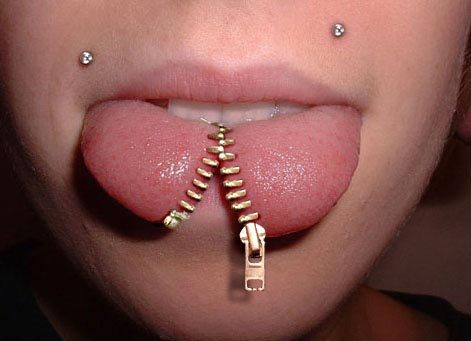 The idea of navel rings is said to have begun in the 1940s when Hollywood movie producers were banned from showing belly buttons on the big screen. To get around this limitation, actresses wore gems or jewels in their navels so they didn't actually show. Others believe that the tradition began long ago in Roman, Greek and Egyptian cultures. It was customary to decorate the body with piercings and tattoos in these cultures.
The idea of navel rings is said to have begun in the 1940s when Hollywood movie producers were banned from showing belly buttons on the big screen. To get around this limitation, actresses wore gems or jewels in their navels so they didn't actually show. Others believe that the tradition began long ago in Roman, Greek and Egyptian cultures. It was customary to decorate the body with piercings and tattoos in these cultures. Wherever the tradition began, belly rings are very popular today, especially among young women. The ability to easily hide or conceal the belly button ring, especially during the healing process, has really led to the piercing's popularity.
Wherever the tradition began, belly rings are very popular today, especially among young women. The ability to easily hide or conceal the belly button ring, especially during the healing process, has really led to the piercing's popularity.The name "navel piercing" is not exactly accurate, however. In reality, the skin directly above the navel is the most popular way to pierce. Of course, a person can pierce the skin on the bottom and sides of the navel as well.
To allow for easy healing, piercers generally use a standard barbell to pierce the navel. Navel piercings have their own special kind of barbells, though. They are sometimes referred to as "bananabells" or "bananabars" because of their curved design."
Body jewelry is measured by "gauges." Belly buttons are customarily pierced with 14 Gauge, or 1/16", barbells. The Association of Professional Piercers (APP) states that no greater than 14 GA body jewelry may be used in piercings below the neck. This is to prevent the risk of a negative reaction or skin tearing.
A standard belly ring is 3/8" long, but people sometimes use a longer barbell at the time of piercing to allow room for the area to swell slightly. The balls on a standard belly button ring are usually two different sizes; the top ball is 5 mm in diameter while the bottom ball is 8 mm in diameter.
Even though it is generally regarded as safe, getting one's navel pierced does involve risk. The most common risks include pain at the piercing site, swelling, scarring and infection. Having the piercing done with sterilized tools in a sterilized environment is the smartest way to minimize risk.
For a belly button piercing to heal, it can take from four months to one year. There are many things that affect the healing process of a navel ring: sweat, shirt fabric, overall health, care and quality of jewelry. Only 316L and 316LVM surgical steel are approved as "implant grade" materials by the American Society of Testing and Materials (ASTM).
 Belly button rings are becoming more and more popular and it's important to people take great care of these piercings. They are considered beautiful and a great way to add to one's personal style. If you're interested in getting this type of piercing, make sure you know all the risks and benefits before doing so. ( By Therese Kuster )
Belly button rings are becoming more and more popular and it's important to people take great care of these piercings. They are considered beautiful and a great way to add to one's personal style. If you're interested in getting this type of piercing, make sure you know all the risks and benefits before doing so. ( By Therese Kuster )